mitcsail
Latest

MIT robot's flytrap gripper can grab both fragile and heavy objects
Robot hands tend to skew toward extremes. They can pick up delicate objects or heavy objects, but rarely both. MIT CSAIL's solution? Avoid hands altogether. Its researchers have developed a Venus flytrap-like gripper that can grab objects as fragile as a grape, but also items 100 times its weight -- even if they're oddly shaped. The trick relies on a combination of clever physics with brute force.

AI faithfully recreates paintings with the help of 3D printing
It's easy to get a basic reproduction of a painting, but getting a truly accurate copy is harder than you think. Modern 2D printers typically only have four inks to work with, which simply won't do if you're trying to mimic a classic. Researchers at MIT's CSAIL might have a much better solution -- they've developed RePaint, a system that recreates artwork using an AI-guided 3D printer. The technology promises color-accurate reproductions even in less-than-flattering conditions.

Honda teams up with MIT and others to develop curious AI
Honda is teaming up with three universities on a project aimed at developing curious artificial intelligence. The new three-year initiative, dubbed the Curious Minded Machine, will work towards an intelligent system that can learn continuously, much like a human, and can actually "learn to learn," as children do. "Our ultimate goal is to create new types of machines that can acquire an interest in learning and knowledge, and the ability to interact with the world and others," Soshi Iba, a principal scientist at the Honda Research Institute, said in a statement. "We want to develop Curious Minded Machines that use curiosity to serve the common good by understanding people's needs, empowering human capability and ultimately addressing complex societal issues."

AI catches fake news by gauging the accuracy of its source
Internet giants are getting better at countering fake news. For the most part, though, they screen content on a story-by-story basis and only block entire outlets well after they've done significant damage. Researchers from MIT's CSAIL and Qatar's Computing Research Institute might have a better solution: use AI to measure the quality of the source. Their machine learning algorithm uses collections of existing articles to gauge the accuracy and bias of a given outlet on the assumption that a fake news peddler or spin factory isn't about to change its ways. Rather than focusing on the claims themselves, it studies the language used to express those claims.
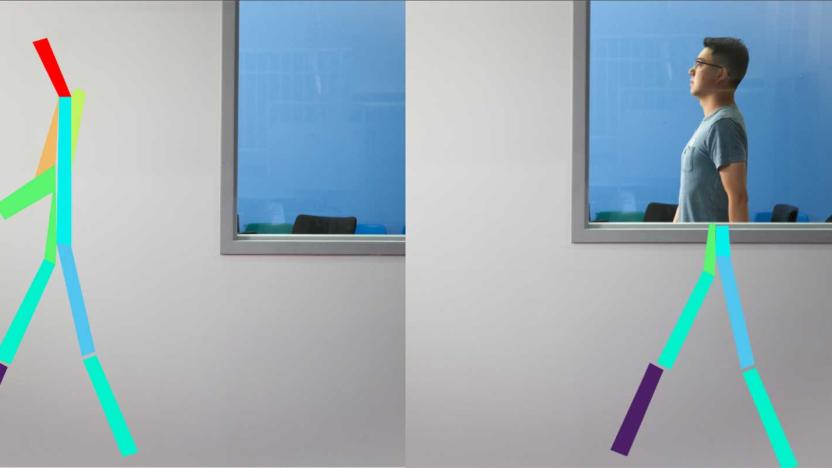
AI detects movement through walls using wireless signals
You don't need exotic radar, infrared or elaborate mesh networks to spot people through walls -- all you need are some easily detectable wireless signals and a dash of AI. Researchers at MIT CSAIL have developed a system (RF-Pose) that uses a neural network to teach RF-equipped devices to sense people's movement and postures behind obstacles. The team trained their AI to recognize human motion in RF by showing it examples of both on-camera movement and signals reflected from people's bodies, helping it understand how the reflections correlate to a given posture. From there, the AI could use wireless alone to estimate someone's movements and represent them using stick figures.
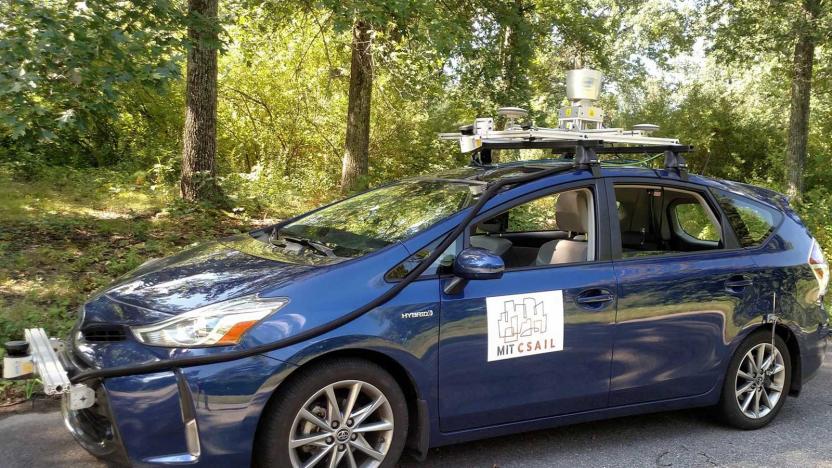
MIT's self-driving car can navigate unmapped country roads
There's a good reason why companies often test self-driving cars in big cities: they'd be lost most anywhere else. They typically need well-labeled 3D maps to identify curbs, lanes and signs, which isn't much use on a backwoods road where those features might not even exist. MIT CSAIL may have a solution, though. Its researchers (with some help from Toyota) have developed a new framework, MapLite, that can find its way without any 3D maps.

With Squadbox, friends moderate harassing messages in your email
Researchers at MIT's Computer Science and Artificial Intelligence Laboratory have developed a tool aimed at fighting harassment online. It's called Squadbox and the idea behind it is to have your friends or coworkers moderate your incoming messages for you. The research team interviewed a number of people who had experienced online harassment in the past and then designed Squadbox's features based on those conversations.

MIT's robotic carpenters take the hassle out of custom furniture
If you want to build custom furniture, you usually need to know your way around a saw and devote days to both designing it and cutting every last piece. MIT's CSAIL might have a better solution: let computers and robots do the hard work. Its researchers have developed an AutoSaw system that makes it easy to craft furniture without the risk of cutting your fingers. You start on your computer by customizing furniture templates in OnShape's simple CAD system. After that, modified robots (a Roomba for a jigsaw, Kuka youBots for chopping) cut the individual parts. You still have to assemble it yourself, but the software will guide you through the process.

MIT's ColorFab can 3D print jewelry that changes colors
3D printing can already turn your amazing ideas into tangible objects, but a new technique out of MIT CSAIL could lead to even better results. The method, called ColorFab, gives you the ability to create objects that can change colors after you print them out. You can use it, for instance, to create a phone case or a pair of earrings that matches your red dress today and will also match your blue pantsuit tomorrow. ColorFab's magic lies in the CSAIL team's custom-made ink, which has base dyes and light-adaptable or "photochromic" dyes. The light-adaptable dyes bring out the color in the base dyes when exposed to UV light. Under visible light, the colors disappear, and the ink turns transparent.

New camera tech could help self-driving cars see around corners
Self-driving cars can detect much of the world around them, but they're inherently limited by their reliance on line-of-sight vision. They're not so good at spotting the visual cues that a car is just around the corner -- you might spot the encroaching headlight beams, but a car might not. MIT's CSAIL team may have a solution, though. They've developed camera technology that uses subtle changes in lighting on the floor to determine what's around a corner. As objects reflect a small amount of light around walls, creating a "shadow," you can piece together images of objects around the corner by capturing video of the floor and tracking the shifting colors.
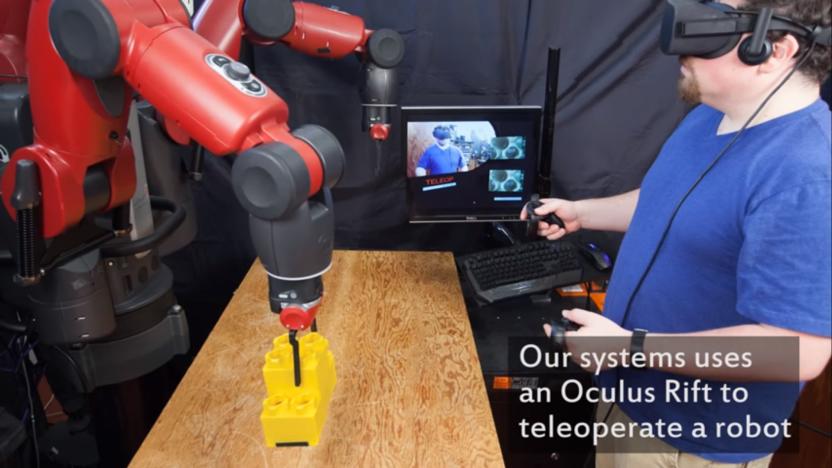
Scientists test VR system to control robots from virtual cockpits
Folks have made telerobotics -- aka, operating robots from afar -- work, but solutions are expensive. Similar to how the US Navy just opted to ditch its expensive joysticks for Xbox controllers, researchers are thinking about consumer-tested solutions. Scientists at MIT CSAIL have developed a system that uses off-the-shelf gaming and VR technology (Unity and Oculus Rift, respectively) that both drives down the price while situating the users in a more organically-designed interface. Plus, it pretty much lets users control a robot from the inside of a simulated virtual cockpit.
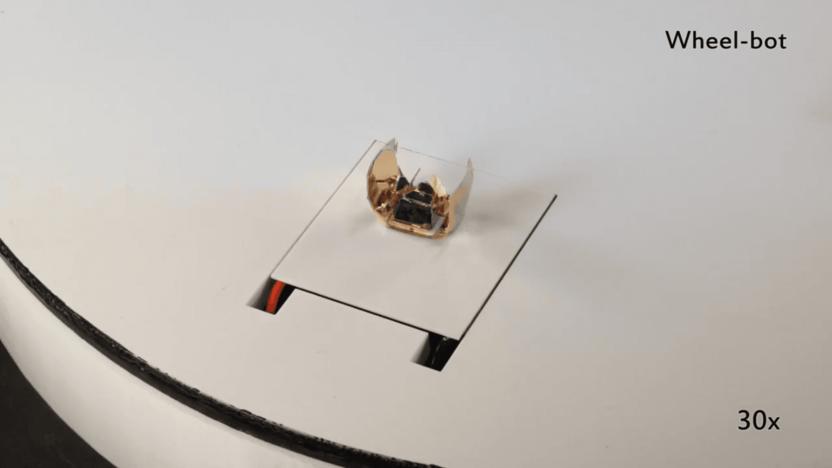
MIT CSAIL's origami-bot wears foldable exosuits
Unless alien machines that can turn into cars and trucks come and teach us their secrets, we'll have to conjure up our own ways to make transforming robots. Researchers from MIT CSAIL have been on it for years, and their latest method relies on a cube robot called "Primer" that changes shape and function by donning different exoskeletons. Primer, which was based on the cube-shaped machines the team developed in 2013, starts the process by moving to the center of the exoskeletons that start as flat sheets. After applying a bit of heat on the sheets, they fold into specific shapes using Primer as a core, turning into a boat, a glider or a wheel.

Edible robot surgeons will cure you from the inside out
Back in 1985, the best robotic surgeon we had was the Puma 560, a manipulator arm just barely more advanced than Rocky Balboa's robo-butler. Just barely. The Puma was nevertheless revolutionary. It was the very first mechanical operator, progenitor to steady-handed robo-surgeons like the DaVinci system. But in the near future, robots will no longer be cutting into us -- from the outside, at least.
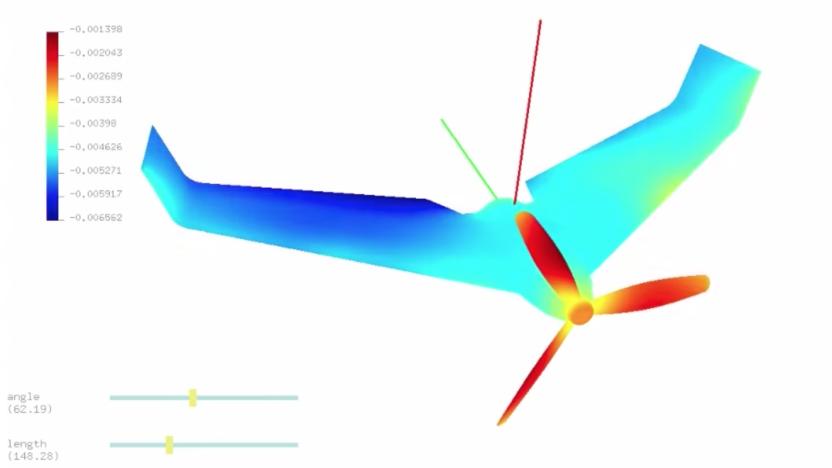
MIT-developed plugin makes CAD changes 'instant'
A new computer-aided-design (CAD) plug-in could drastically improve products you use on a daily basis. Researchers from MIT and Columbia University say the tool will allow engineers to develop prototypes in real-time. They claim its ease of use will have an immediate impact on objects with complex designs, such as cars, planes, and robots.

Ever-changing memory could lead to faster processors
Virtually every central processor in your devices uses a tiered set of memory caches to speed things up by fetching commonly used data. But it's not very efficient -- in trying to accommodate everything, it's rarely the fastest at anything. MIT's CSAIL researchers want to fix that. They've developed a cache system (appropriately named Jenga) that creates new cache structures on the spot to optimize for a specific app. As Jenga knows the physical locations of each memory bank, it can calculate how to store data to reduce the travel time (and thus lag) as much as possible, even if that means changing the hierarchy. Whether an app would benefit from multiple cache levels or one gigantic cache, this system would be ready.

ICYMI: A new form of whale communication, found
try{document.getElementById("aol-cms-player-1").style.display="none";}catch(e){}Today on In Case You Missed It: A new Marine Mammal Science publication found that humpback whales slap the surface of the water to communicate with one another, although what they're actually saying is still a mystery. Meanwhile MIT's CSAIL lab created a CAD-like program to create UAVS. The best part of the software is testing it virtually to see if your creation would fly in real life. The Tesla Coil video by SmarterEveryDay is pretty great and for fun, you may want to watch the Turkish satellite heading up to space. As always, please share any interesting tech or science videos you find by using the #ICYMI hashtag on Twitter for @mskerryd.

Design your dream drone with MIT's program
Most of today's commercially available drones have four rotors and more or less look the same (other than that one that's foldable). So if you wanted to own a drone that had, say, five copters or a completely different design altogether, you'd probably have to make your own, which can be a really tedious process. If you don't know where to start customizing your flying masterpiece, MIT's new system could be your first stop. The institute's Computer Science and Artificial Intelligence Laboratory (CSAIL)'s latest project is what it says is the first platform that lets you design, simulate and build your own drone.

MIT is trying to crack wireless VR, too
Smartphone-based virtual reality headsets are great and all, but for the best games and experiences you need a dedicated facehugger tethered to a powerful PC like it's a diver's lifeline. Wireless hardware is one of the inevitable next steps for VR, and a company called TPCAST is already developing a cord-cutting peripheral for the Vive, supported by HTC's VR accelerator program. MIT's Computer Science and Artificial Intelligence Laboratory (CSAIL) is making headway in this area too, today releasing research into a wireless system that's both headset-agnostic and could address some unforeseen problems with peripherals like TPCAST's.

ICYMI: Mobility scooters that autonomously get around
try{document.getElementById("aol-cms-player-1").style.display="none";}catch(e){}Today on In Case You Missed It: MIT's Computer Science and AI Lab have cooked up another autonomously driving vehicle, but this one is a disability scooter. In this newly posted video, you can watch as the scooter navigates around human obstacles when taking a person on the way to their destination. In other AI news, Google and Blizzard Entertainment are teaming up to use Deepmind to train the system to autonomously play Starcraft II. If you, too, have a fondness for Big Mouth Billy Bass, the singing fish trophy, you need to see how one was hacked to be the voice of Alexa. It's pretty terrifying. And if you haven't yet played the New York Times' Voter Suppression Trail, you're missing out on both nostalgia and maybe sadness. As always, please share any interesting tech or science videos you find by using the #ICYMI hashtag on Twitter for @mskerryd.

ICYMI: Family seamstresses will be replaced soon enough
try{document.getElementById("aol-cms-player-1").style.display="none";}catch(e){}Today on In Case You Missed It: Robots have finally gotten around the 'needing human assistance' thing when it comes to sewing clothing. The Sewbo is one such option, which can stitch together clothing as long as the garment is first dipped in a stiffening solution that makes it feel like cardboard.








